Lifepak Defibrillators
December 28, 2017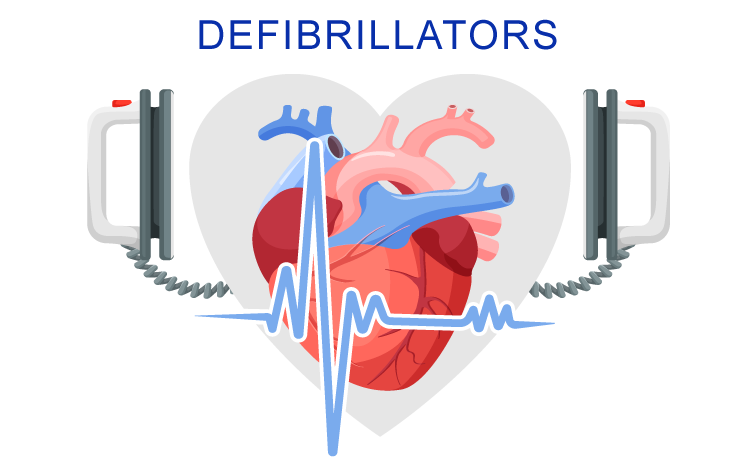
Defibrillator Overview
Defibrillators are becoming commonplace in more than just hospitals and medical facilities. Police cars, businesses, and schools are some of the places that have started to stock up on defibrillators in case of use for emergencies. Soma Technology has one on each floor of our headquarters, on the unfortunate off-chance, it will be needed before an ambulance arrives. This need is predicated on the idea that at any time, someone can fall ill and need to be immediately revived.
Most often defibrillators are depicted as some yelling, “We’re losing him!” as they rub the two paddles together and shock the patient. Oftentimes, this is dramatized for entertainment value, and there is more that goes into these actions than initially seems. Especially, the knowledge of how defibrillators work, and the training involved in becoming certified to use a defibrillator.
How Do Defibrillators Work?
To apply the defibrillator and electric current, it first needs to be known that the person is not breathing. If they are breathing during the shock treatment, they can catch on fire. It is helpful in a hospital setting when they are hooked up to a patient monitor to tell what the oxygen levels are. We have a wide variety of patient monitors, here. Defibrillators are usually portable with a battery-operated pack. The heart works by pumping blood and each pump is accompanied by a small electric sense. This is sensed on EKG Machines, which is how waveforms are transformed and pictured onto the screen.
According to the National Heart, Lung, and Blood Institute, “Sticky pads with sensors (called electrodes) are attached to the chest of the person who is having sudden cardiac arrest (SCA). The electrodes send information about the person’s heart rhythm to a computer in the AED. The computer analyzes the heart rhythm to find out whether an electric shock is needed. If a shock is needed, the AED uses voice prompts to tell you when to give the shock, and the electrodes deliver it. Using AEDs that are FDA-approved to shock the heart within minutes of the start of SCA may restore a normal heart rhythm. Every minute counts. Each minute of SCA leads to a 10 percent reduction in survival.”
It is important to remember that an AED is an electrical device. As with all electrical devices, do not use them near water including: in the rain, puddles, rivers, streams, lakes, etc… First, you will need to turn on the AED and read the screen. Take off the person’s shirt so they have an exposed chest. Stick the pads onto the person’s skin on the right center and the one on the left rib cage. You may need to remove a person’s chest hair. You will need to check for any metal that would be a conductor including belts, shoes, and body jewelry. The AED will then analyze the electrical waves in that person’s body.
Please check your local hospitals, community centers, police departments, and other government services to see if they are offering classes in both defibrillation and CPR.
When Should an AED Be Used?
An AED should be used when a person is in distress/ has collapsed/ is unconscious/ or has symptoms of a heart attack. The common symptoms of a heart attack, or a myocardial infarction, are severe chest pain, heavy breathing, pain down the arm, shoulder pain, nausea, and back, and jaw pain.
Training Courses and a Rough Idea of How an AED Works
Please take a real course on how to be properly trained. This is just a blog post and only a general guideline on the idea of how to save someone’s life. There are Good Samaritan Laws to protect those who used an AED in a true crisis, but that is only some form of protection. If you cannot find someone who is trained, you can use the defibrillator yourself. Firstly, the most important part is to check if the person is unconscious and not breathing. Secondly, call 911. The transponder will likely calm down the situation and tell you how to administer the defibrillator. They will send emergency services to your location, including an ambulance and responders that will have the medical background and utilities to provide professional help, and the means of transporting the person to the nearest hospital.
On the off chance that you are next to a defibrillator the NHLBI suggests, “If two rescuers are present, one can provide CPR (cardiopulmonary resuscitation) while the other calls 9–1–1 and gets the AED. Check the person’s breathing and pulse. If breathing and pulse are absent or irregular, prepare to use the AED as soon as possible. (SCA causes death if it’s not treated within minutes.) If no one knows how long the person has been unconscious, or if an AED isn’t readily available, do 2 minutes of CPR. Then use the AED (if you have one) to check the person. After you use the AED, or if you don’t have an AED, give CPR until emergency medical help arrives or until the person begins to move. Try to limit pauses in CPR. After 2 minutes of CPR, you can use the AED again to check the person’s heart rhythm and give another shock, if needed. If a shock isn’t needed, continue CPR.”
The AED will then use this analysis to determine if there is going to need to be an electrical shock to the person to try to jump-start their heart. If the person then moves, try to engage in CPR. Again, if it is impossible to gauge how care is given, stay with the person and wait for emergency medical services. Please remember to stay calm during this experience, as it is imperative to both your and the patient’s safety and health.
Types of Defibrillators
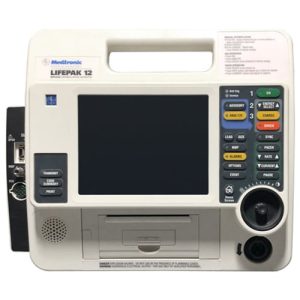
This is one of the older models of defibrillators in the Physio-Control line. This is a semi-automatic defibrillator that uses a Shock Advisory System. The software analyzes the ECG and detects if there is a rhythm that it can easily shock. This includes a biphasic defibrillation waveform, semi-automatic defibrillation, a non-invasive pacemaker, a pulse oximeter, and an interpretive 12-lead ECG. Other features include End-tidal CO2, IP Monitor, Vital Sign and ST monitoring, fax transmission, paddle accessories, and an Electroluminescent display. This defibrillator operates in advisory, manual, archive, setup, service, and in-service modes.
This Lifepak is the standard for the industry. This model is slightly newer than the Lifepak 12. It is operationally effective, durable, and ubiquitous in emergency care. This AED offers ADAPTIV Biphasic technology, an 8.4″ liquid color display, a CPR metronome using audible prompts to guide, 3-Lead ECG Monitoring, and a 100 mm printer. This defibrillator uses Masimo Rainbow technology to help diagnose conditions and improve patient care. This lifepak differs in that it has a CPR metronome to help perform compressions and ventilations with the 2015 AHA Guidelines.
The Lifepak 15 also has the same six modes: AED, Manual, Archive, Setup, Service, and Demo. Data management is integral to the success of this machine. This device can be configured to transmit data wirelessly, and with blue-tooth enabled devices.
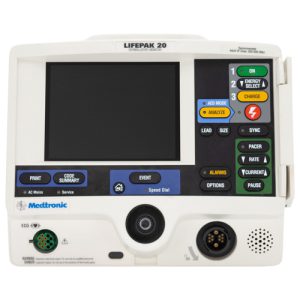
As with all defibrillators, this is poised to be compact, and easily portable. All user features are available; except manual defibrillation. This includes synchronous cardioversion, pacing, and access to archived patient records. The shock energy defaults up to 360 Jules. User-selectable options are to display ECG waveforms and/or visual AED prompts. Set up mode: allows the operator to configure the device settings. Service mode: allows the operator to execute diagnostic tests and calibration, display device mode software and hardware versions, and display and print the diagnostic code log. In-service mode: simulated waveforms are available for demonstration purposes.
The waveforms consist of short segments of realist data, which are repeated to form a continuous waveform. Archive mode: provides the operator the opportunity to access records of previous patients for review, transmission, printing, editing, or deletion. When the battery gets too low, an alarm will go off noting the need for a new battery.
This is the most advanced defibrillator in the Physio-Control Lifepak line. This system is highly intuitive and ideal for first responders to combine AED and manual capabilities to deliver immediate care. This system is lightweight and compact for easy use. This device can easily print a CODE SUMMARY™ report, including an introduction to patient information and critical event records. The summary report also includes event and vital signs log, and waveform associated with certain events. This is a biphasic waveform, and the CG can be monitored with 3 or 5-wire cables. Standard paddles or therapy electrodes are included for lead monitoring. Alarms that are included are quick set, VF/VT, and CPSS monitoring.
Other Popular Types of Defibrillators
We offer an extensive list of defibrillators. We offer top brands including Codemaster defibrillators, Philips defibrillators, Physio-Control defibrillators, and Zoll defibrillators. Please check out all defibrillators and see if we have the one you are looking for. If you have any defibrillators that you prefer to use instead, please comment on them below and let us know what you like about them.
We Sell Defibrillator Accessories
Soma Technology has a large parts division to support the accessories that go with each product we sell. At somamedicalparts.com, we sell power charging stations, non-rechargeable lithium battery packs, data cards, fast response kits, and the cabinet the defibrillator goes into. Other accessories and parts include the carrying case, adult/pediatric pads, owner’s manual, alarms, and countless other products.
Soma also sells other parts for our products. If you need other parts, we have an extensive collection. Including spare parts for the operating room, imaging, NICU, and other capital medical equipment. Contact [email protected] with any inquiries, and please include the part number.
Service
Along with the parts we offer, we have an excellent service team comprised of biomedical engineers. These engineers have an extensive background in fixing technical issues with medical equipment. We offer competitive warranties on all of the equipment we sell and offer phone technical support during business hours.
Video of the Defibrillator Going Through the Refurbishment Process
We have produced a video of our refurbishment process from when the defibrillator comes into soma from our purchasing department. It is evaluated for technical issues, and all of the broken parts are replaced. Calibration and technical services come next. After the mechanics are quality assessed, then the machine is sent to cosmetics. Cosmetics aesthetically refurbish the machine with paint, new decals, and any structural problems. Finally, your machine is ready to be shipped, with a packing list and to be used. We offer competitive warranties on all products sold.
Final Comments
Have you ever been in a situation where you had to use a defibrillator? Comment on your experience below. Are there any tips that we forgot to include in this article; please comment on them below. If there is any content you are interested in hearing more about please let us know. If you are looking to purchase one of these defibrillators, please contact Soma Technology at 1-800-GET-SOMA, or at [email protected]. On our website, you can add the defibrillators to your cart to receive a quote from one of our competent sales reps.
3 comments
Leave a Reply
Explore Other Blog Items By Category
Recent Posts


Surgical Microscope Rentals

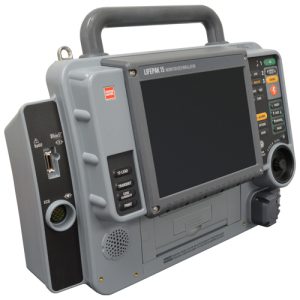
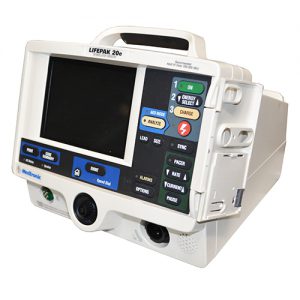

As providers of potentially life-saving equipment, it goes without saying that we get to hear powerful stories of how defibrillators have saved the day.
Hello Nicholas!
This is true. Technology has come a long way in a short amount of time to manufacture these defibrillators that save thousands of lives!
Thanks for reading!
Soma Tech Intl